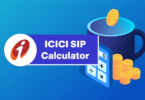In this article, I will explain to the readers the major index SENSEX. I will also tell the readers about the process by which it is calculated. This is going to be a very informative read for you guys. I hope you guys enjoy it thoroughly.
So, before starting the main topic, let us look at a few points about the BSE and its index – SENSEX.
- BSE is Asia’s oldest and world’s fastest stock exchange. It was formed in 1875. It ranks at number 10th in the world. It was the first stock exchange to be recognized by the Indian government under the Securities Contracts Regulation Act.
- BSE accounts for over 2/3rd of the total trading volume in India. It has over 6000 stocks listed with it. It was found by 25 equity brokers who came together in 1875 and created “The Native Shares and Stock Brokers Association”. It was created with ₹1 at the time, which was contributed by all 25 brokers. One big name amongst them was Premchand Roychand.
- SENSEX is the major index of the BSE. It was introduced on 1st January 1986. The term was coined by Deepak Mohoni. SENSEX is the blend of the word sensitivity and the word index. So, SENSEX is essentially a sensitivity index.
- SENSEX is the index of the top 30 companies listed in the BSE. These companies are the largest, most traded, and the soundest companies listed on BSE. SENSEX has been on a growth curve since the LPG policy in 1991, where India removed trade barriers. You can also earn a good amount of money if you have the proper knowledge and if you don’t have proper knowledge then also it’s okay. You can join a good share market course. This will help you in the long run.
What are the companies listed in BSE Sensex?
BSE Sensex index comprises of the following stocks as of August 2020:
- Reliance Industries Ltd.
- HDFC Bank Ltd.
- Infosys Limited
- Housing Development Fin. Corp. Ltd.
- Tata Consultancy Services Ltd.
- ICICI Bank Ltd.
- Hindustan Unilever Ltd.
- Kotak Mahindra Bank Limited
- ITC Ltd.
- Bharti Airtel Ltd.
- Larsen and Toubro Ltd.
- Axis Bank Ltd.
- Maruti Suzuki India Limited
- Bajaj Finance Ltd.
- Asian Paints Limited
- HCL Technologies Ltd.
- State Bank of India
- Nestle India Ltd.
- Mahindra & Mahindra Ltd.
- Sun Pharmaceutical Industries Ltd.
- UltraTech Cement Limited
- Titan Company Ltd.
- Power Grid Corporation of India Ltd.
- Tech Mahindra Ltd.
- Bajaj Auto Limited
- Bajaj Finserv Ltd.
- NTPC Limited
- Indusind Bank Ltd.
- Tata Steel Ltd.
- Oil & Natural Gas Corporation Ltd.
Best Indian Stock Market Blogs
Let us get to the topic now.
What is SENSEX?
The BSE SENSEX is the benchmark index of the Bombay Stock Exchange. It is a free-float market-weighted index that comprises 30 of the largest and most actively traded stocks on the Bombay Stock Exchange. It represents the Bombay Stock Exchange. If it is in the bullish phase, it means that the BSE is doing great. If the index is in the bearish phase, it means that the BSE is not doing so great.The companies listed on the BSE represent the various economic sectors of the country. The composition of SENSEX is reviewed every June and December. This index is the oldest index of India and is used to note the various changes in industries.
In order for a company to be listed on SENSEX, there are 5 criteria:
- The first is that it should be a BSE-listed company.
- The second is that it should be at least a large-cap company.
- The third is that stock should be more liquid than other stocks in general.
- Fourth is that it should generate revenue from the core activities.
- Fifth is that the company should keep the sector in line with the Indian Equity Market.
The main growth of SENSEX has been in the 21st century. It went from 5000 in the 2000s to 42000 in 2020. It has been on the rise at one of the fastest growth rates in the world. Although during recent times (COVID-19) it has been slowed down, it is predicted that it will catch up and get back on track.
In recent times, COVID-19 had a huge impact on stock markets all over the world, and BSE too faced the heat. The economy went in recession and millions of people lost their job. Again so, the second stream of COVID-19 is leading the stock markets in a deeper recession. Investors lost 9 lakh crores in one day when the cases rose to 168,912 in a span of
24 hrs on April 12th 2021. Similarly, there have been cases where BSE and NSE have crashed on various occasions. These kinds of phenomena are generally caused over a long period and a gradual manner.
Next up we will see how to calculate SENSEX
How to calculate SENSEX?
When it was first launched in 1986, it was calculated using a market-capitalization-weighted methodology. In this technique, components are weighted according to the total market value of their outstanding shares. The proportion of the stock’s value to the total market value of the index components gives you the weight of the company in the index.
But since 2003, SENSEX has been calculated using a free-float capitalization method. This is similar to the market-cap-weighted method, but instead of outstanding shares of the company, it takes into consideration the float of the company. The float of any company is the shares that are already available for trading. This omits out the non-including of restricted shares (which are not readily available for trading).
To calculate SENSEX using the free-float method, follow the given steps:
- Calculate the company’s market cap. You can calculate this by multiplying the total number of outstanding shares by the market value of the share.
(Market value Total Shares Outstanding) = Market Capitalization.
- Calculate the free-float factor. This is the percentage of floating shares to outstanding shares.
(Floating Shares
- Then multiply the market cap with the free-float factor. Easy right?!
(Market Capitalization
Example:
Company ‘A’ has total outstanding shares of 10 million, whereas floating shares of 8 million. The market price of the share is $10. Step 1 would be to calculate the market cap, i.e. $100 million. The next step would be to find out the free-float factor, i.e. 80% or 0.80. The final step is to multiply the total market cap and the free-float factor, i.e. $80 million.
So, this was the basics of SENSEX. I covered the definition and calculation of the index. I hope you guys learned something new from my article. In order to expand your knowledge of stock markets, I would suggest some good courses on the stock market.





